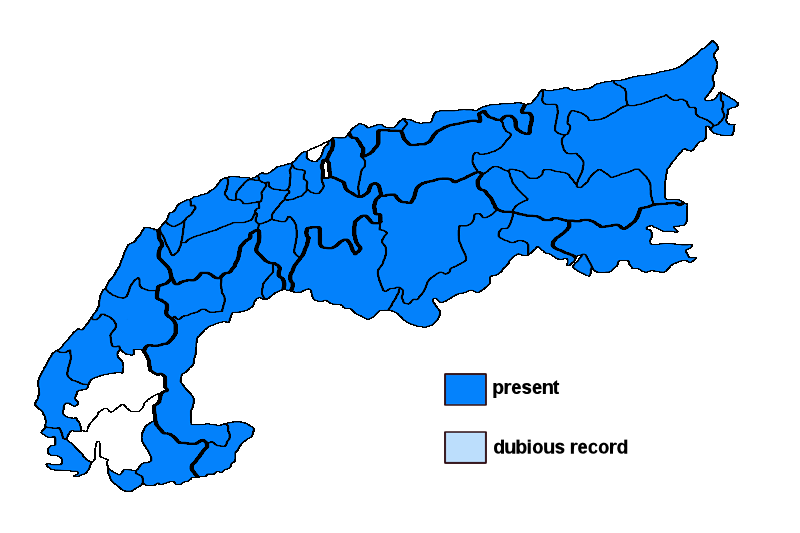Graphis scripta (L.) Ach.
Syn.: Graphis hebraica (Hoffm.) Röhl., Graphis limitata (Pers.) Röhl., Graphis microcarpa (Ach.) Röhl., Graphis scripta (L.) Ach. var. limitata (Pers.) Ach., Graphis scripta (L.) Ach. var. spathea Ach., Graphis spathea (Ach.) Röhl., Lichen scriptus L., Opegrapha limitata Pers.
Lichenised. Poorly known taxon.
Substrate: bark
Altitudinal range: from the mesomediterranean belt (potential vegetation: evergreen broad-leaved forests dominated by Quercus ilex) to the montane belt (potential vegetation: deciduous forests dominated by Fagus sylvatica and closed coniferous forests with Picea abies)
Note: a widespread temperate to southern boreal-montane lichen found on smooth bark, mostly in deciduous forests, in humid areas also on twigs and branches, but normally on trunks, in drier areas restricted to the base of the boles. In the narrow sense, this taxon is characterised by apothecia with more or less hidden discs and a thin (<= 0.1 mm) to absent thalline margin, while several species have been segregated based on morphological characters only (G. betulina, G. macrocarpa, G. pulverulenta). A recent study based on both molecular and morphological characters showed that, although between six and seven putative species are nested within the G. scripta-complex, these do not fully correspond to the taxa that were distinguished based on apothecium morphology. Pending further studies, we treat here G. scripta in a broad sense, while the fewer recent records of the morphologically defined “species” are provisionally treated as separate entities.

Austria: Vorarlberg; Tirol; Salzburg; Kärnten; Steiermark; Oberösterreich; Niederösterreich (incl. Wien); Burgenland; Germany: Oberbayern; Schwaben; Switzerland: Bern; Fribourg; Glarus; Graubünden; Luzern; St. Gallen; Schwyz; Ticino; Uri; Unterwalden; Vaud; Valais; France: Alpes-Maritimes; Drôme; Isère; Savoie; Haute-Savoie; Vaucluse; Var; Italy: Friuli; Veneto; Trentino Alto Adige; Lombardia; Piemonte; Valle d'Aosta; Liguria; Slovenia: Alpine and Pre-Alpine Slovenia; Trnovsky Gozd;





